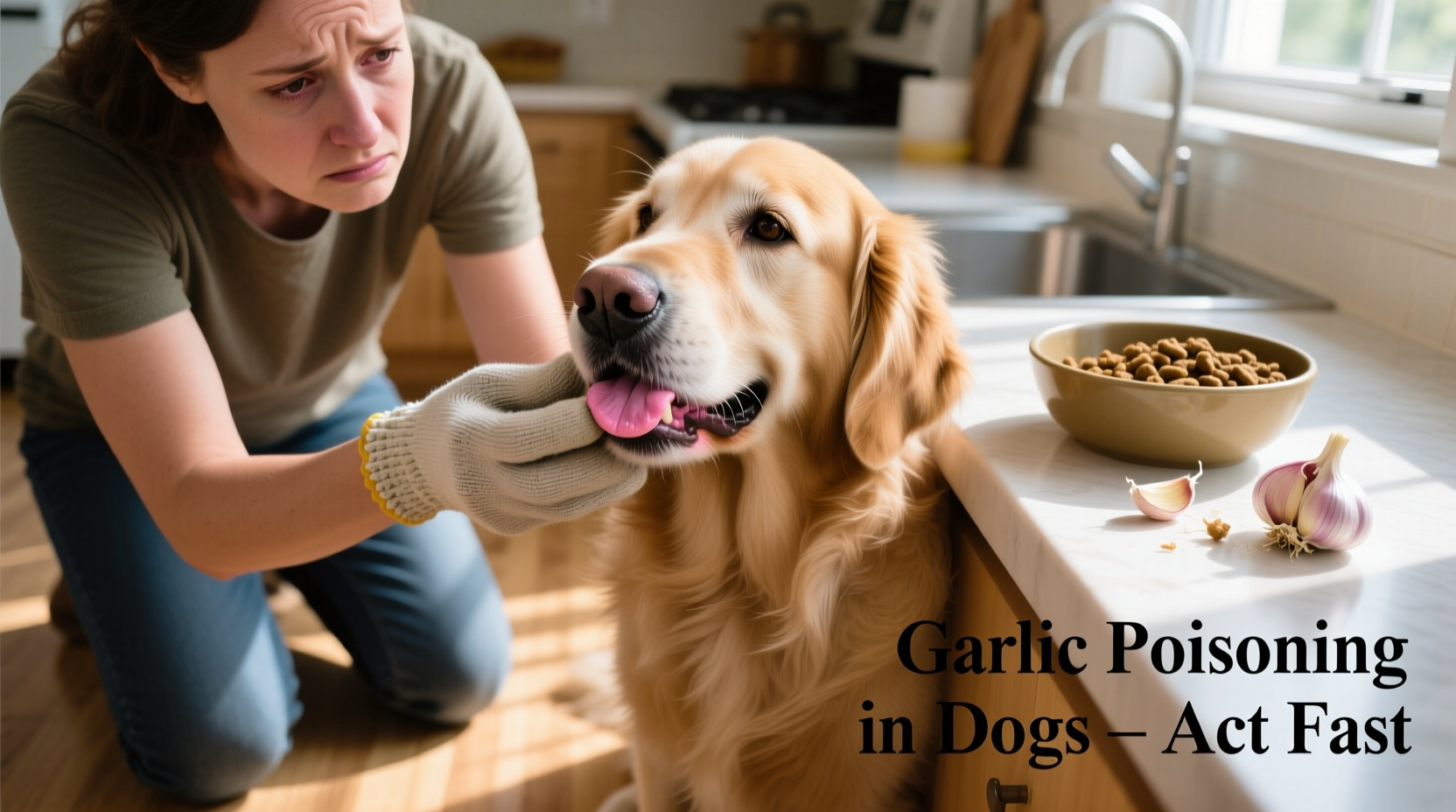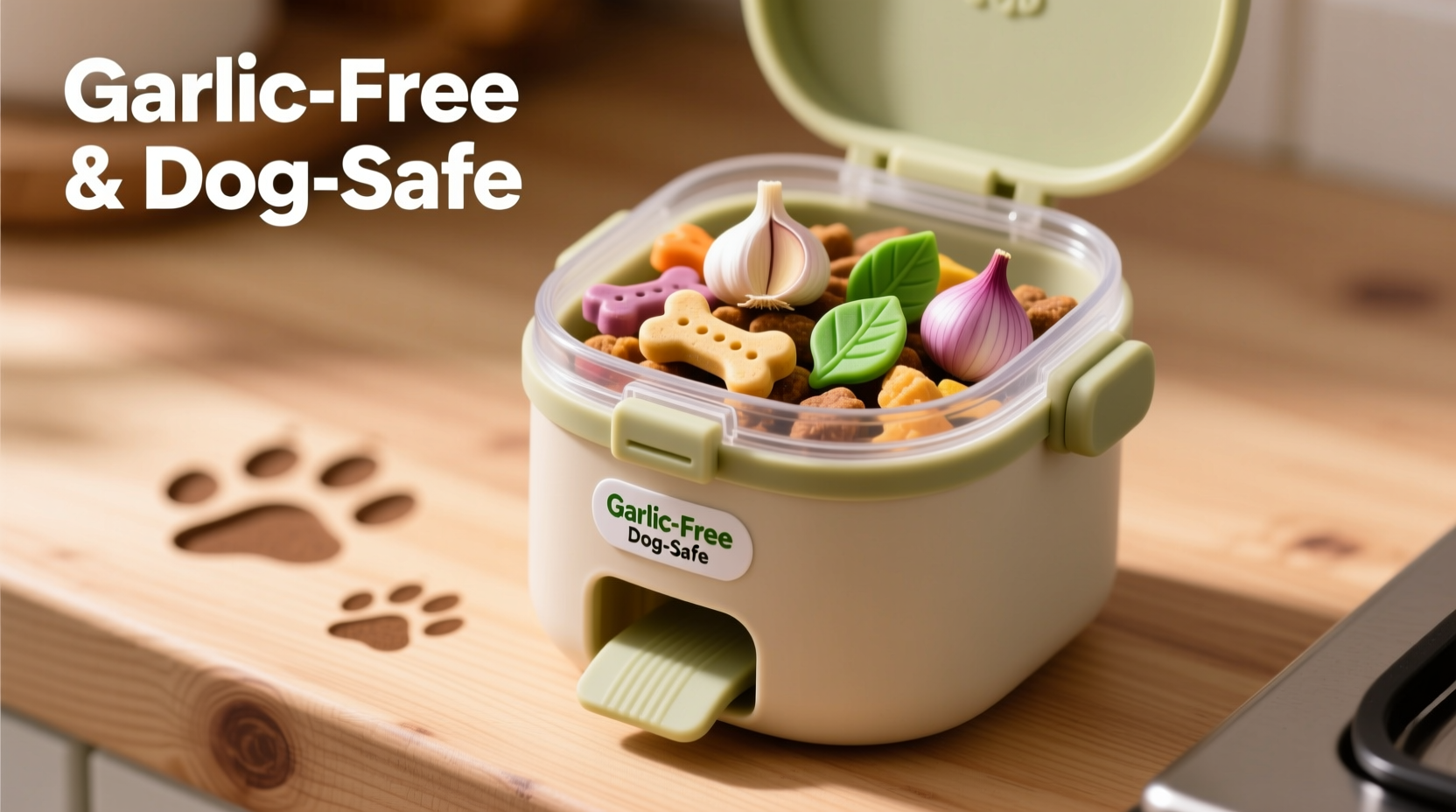No, garlic is not safe for dogs. Garlic contains thiosulfate compounds that damage red blood cells, leading to hemolytic anemia. Even small amounts can be toxic, with symptoms appearing 24-72 hours after ingestion. The ASPCA Animal Poison Control Center confirms garlic is toxic to dogs at doses as low as 15-30 grams per kilogram of body weight.
Many dog owners wonder whether garlic is safe for dogs after hearing conflicting information online. Some holistic pet sites claim small amounts offer health benefits, while veterinary professionals consistently warn of its dangers. This confusion puts pets at risk - garlic toxicity causes hundreds of emergency vet visits annually. Understanding the science behind garlic's effects on canine physiology is crucial for responsible pet ownership.
Why Garlic Is Dangerous for Dogs: The Science Explained
Unlike humans, dogs lack the enzyme system to properly metabolize N-propyl disulfide, the primary toxic compound in garlic. When ingested, this compound oxidizes hemoglobin in red blood cells, forming Heinz bodies that make cells fragile and prone to rupture. This process, called hemolytic anemia, reduces oxygen delivery throughout the body.
"Garlic belongs to the Allium family, which includes onions, chives, and leeks - all toxic to dogs," explains Dr. Jennifer Coates, veterinary advisor for PetMD. "The misconception about garlic's safety likely stems from its use in some commercial 'natural' flea repellents, but these products contain such minimal amounts they're generally considered safe. However, any intentional feeding of garlic to dogs carries risk. "

Garlic Toxicity Levels: What Amounts Are Dangerous?
| Dog Size | Garlic Amount | Risk Level | Equivalent Household Measure |
|---|---|---|---|
| Small (10 lbs) | 5 grams | Moderate | 1 clove |
| Medium (30 lbs) | 15 grams | High | 3 cloves |
| Large (60 lbs) | 30 grams | Severe | 6 cloves |
| Any size | Repeated small doses | Accumulative danger | Daily "health" supplements |
This garlic toxicity chart reflects data from the ASPCA Animal Poison Control Center, which handles over 200,000 pet poisoning cases annually. Note that powdered garlic is significantly more concentrated - just 1 teaspoon equals approximately 5 cloves of fresh garlic.
Symptoms of Garlic Poisoning in Dogs
Symptoms typically appear 24-72 hours after ingestion as damaged red blood cells accumulate. Early signs include:
- Pale or yellow-tinged gums (jaundice)
- Weakness and lethargy
- Increased heart and respiratory rates
- Red or brown urine (hemoglobinuria)
- Vomiting and diarrhea
Severe cases progress to collapse, difficulty breathing, and potentially death without treatment. The delayed onset makes diagnosis challenging, as owners often don't connect symptoms with garlic ingestion days earlier.
What to Do If Your Dog Eats Garlic
If your dog consumes garlic, immediate action is critical:
- Contact your veterinarian or animal poison control immediately - time is crucial
- Do not induce vomiting unless specifically instructed by a professional
- Bring the garlic product packaging to help determine the amount ingested
- Monitor for symptoms for at least 72 hours after exposure
Treatment typically involves intravenous fluids, oxygen therapy, and in severe cases, blood transfusions. Early intervention significantly improves outcomes - dogs treated within 12 hours of ingestion have much better recovery rates.
Common Sources of Accidental Garlic Exposure
Dog owners often unknowingly expose their pets to garlic through:
- Human foods shared at the table (garlic bread, pizza, pasta sauces)
- "Natural" flea repellent products containing garlic
- Homemade dog treats with garlic powder
- Leftover scraps in compost bins
- Garlic supplements marketed for pets
A 2023 study published in Veterinary Medicine and Science found that 68% of garlic poisoning cases resulted from dogs consuming human food leftovers. The researchers emphasized that even small amounts in sauces or dressings can accumulate to toxic levels with repeated exposure.
Safe Alternatives for Dog Health Support
If you're seeking natural ways to support your dog's health, consider these veterinarian-approved alternatives:
- For immune support: Blueberries, pumpkin, and coconut oil (in moderation)
- For digestive health: Plain canned pumpkin and plain yogurt
- For skin and coat: Fish oil supplements specifically formulated for dogs
- For flea prevention: Vet-approved topical treatments or food-grade diatomaceous earth
Always consult your veterinarian before introducing new foods or supplements to your dog's diet. What works for humans often doesn't translate safely to canine physiology.
When Garlic Might Be More Dangerous
Certain factors increase garlic's toxicity risk:
- Breed sensitivity: Japanese breeds (Shiba Inu, Akita) have higher susceptibility
- Pre-existing conditions: Dogs with anemia or liver disease face greater risk
- Age factors: Puppies and senior dogs metabolize toxins less efficiently
- Concurrent medications: Some drugs interact with garlic compounds
The American Veterinary Medical Association specifically warns that repeated small exposures (like daily garlic supplements) can cause cumulative toxicity that's harder to diagnose than single large ingestions.
Debunking Common Garlic Myths for Dogs
Despite veterinary consensus, several dangerous myths persist:
- Myth: "Small amounts of garlic prevent fleas" - Reality: No scientific evidence supports this, and the risk outweighs any theoretical benefit
- Myth: "Cooked garlic is safe" - Reality: Cooking doesn't destroy thiosulfate compounds
- Myth: "Garlic boosts immunity" - Reality: While garlic has benefits for humans, dogs process it differently
- Myth: "My dog ate garlic and was fine" - Reality: Some dogs show delayed symptoms or have mild reactions initially that worsen with repeated exposure
Dr. Justine Lee, board-certified veterinary toxicologist, states: "I've treated dogs who developed life-threatening anemia after their well-meaning owners added 'just a little garlic' to their food for months. The dose makes the poison, and for dogs, that dose is much lower than most people realize."











 浙公网安备
33010002000092号
浙公网安备
33010002000092号 浙B2-20120091-4
浙B2-20120091-4